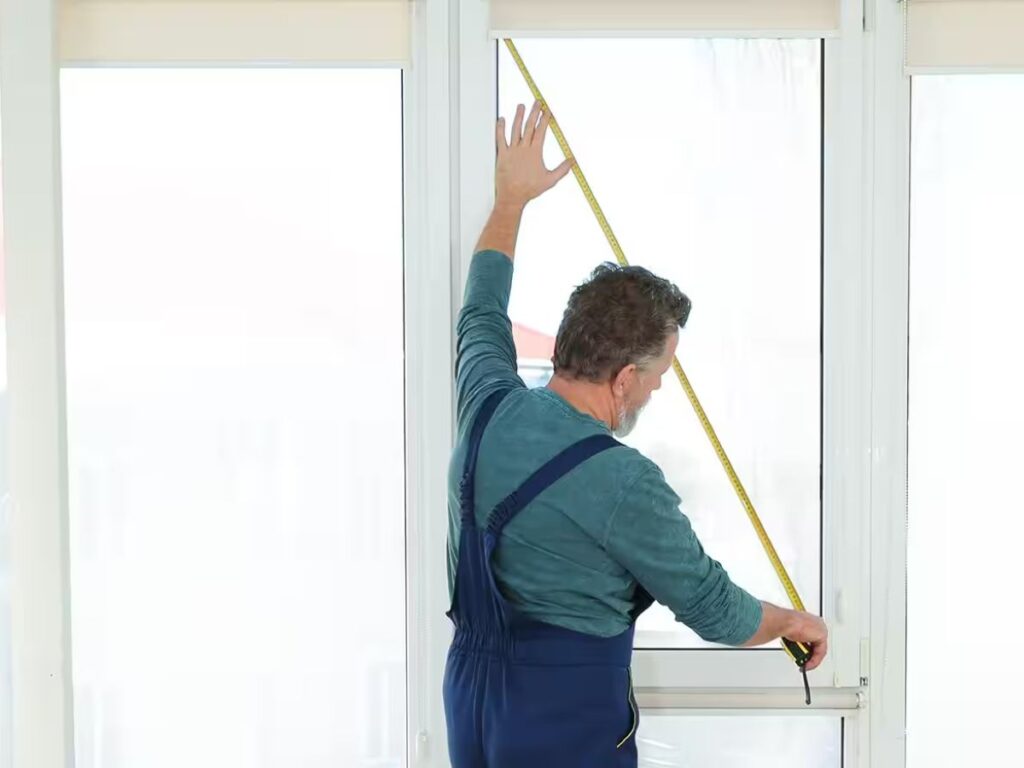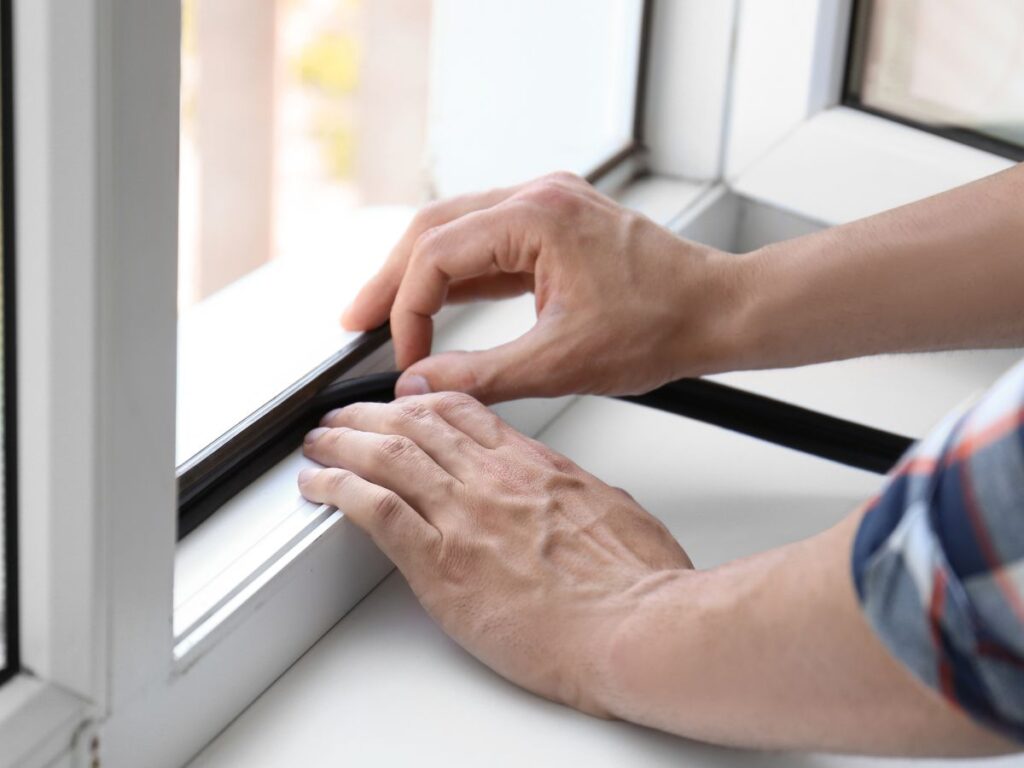The operations manager at a partner site called me in a panic. Their office windows had warped so badly in the summer heat that the frames had started to bow.
They tried calling around for emergency repair, but no one was available for weeks. That conversation stuck with me. UPVC windows aren’t supposed to fail like that, right?
I’ve spent years walking commercial clients through repairs, replacements, and retrofits—especially with tricky UPVC systems. No sales pitch. Just real guidance.
This article breaks down the entire process step-by-step.
Whether you’re replacing a single window or overhauling multiple units, you’ll find everything you need right here. No fluff, just a clear path from problem to solution.
Because if one window is giving you trouble, others won’t be far behind.
So, let’s dive in!
UPVC Window Replacement Process at a Glance
Replacing UPVC windows can feel overwhelming, but when broken into clear steps, the process is simple and manageable. Here’s a streamlined table that summarizes each stage so you can quickly track what’s involved from start to finish.
| Step | Task | Key Actions | Tools/Materials | Goal |
| 1 | Assess Need | Check gaps, fog, stiff hinges, warped frames | Flashlight, inspection | Repair or replace |
| 2 | Gather Gear | Prep tools, sealants, window unit | Screwdrivers, drill, foam, sealant | Be job-ready |
| 3 | Measure | Take width, height, depth, diagonals | Tape, level, straight edge | Right size order |
| 4 | Remove Old | Remove sashes, cut frame, clear debris | Pry bar, knife, vacuum | Clean opening |
| 5 | Prep Opening | Check level, square, clean recess | Level, brush, primer | Stable base |
| 6 | Fit Frame | Dry-fit, shim, align, screw fix | Shims, drill, caps | Square install |
| 7 | Seal & Insulate | Foam gaps, trim, silicone joints | Foam, knife, caulking gun | Airtight fit |
| 8 | Final Check | Test locks, drainage, clean & finish | Cloths, bins | Professional result |
Step#1 Assess the Need for Replacement
Not every UPVC window issue calls for a full rip-out and reinstall.
Before your team grabs the toolbox, it’s smart to check if the problem is surface-level or something deeper.
This section helps you spot the warning signs and decide if you’re dealing with repairs, or if it’s time to go all in with a replacement.
Signs Your Window Is Failing
- Visible Gaps or Drafts: If you’re feeling cold air or seeing daylight through closed windows, your seals have likely broken down. Over time, these gaps can impact insulation, noise control, and even building compliance.
- Condensation Inside the Glass: Moisture trapped between panes means the double-glazed unit has lost its vacuum seal. This not only affects visibility but also signals a drop in energy efficiency.
- Stiff or Jammed Mechanisms: When windows become hard to open or close, it’s often due to worn-out hinges or warped frames. Left unchecked, these issues can lead to full lock failure or security risks.
- Warped or Discolored Frames: Long exposure to UV rays or moisture can cause the UPVC frame to twist or fade. Once structural shape is compromised, there’s no easy fix—replacement becomes the only option.
Is It a Full Replacement or Just Repairs?
- Locks or Handles Damaged: Broken hardware is usually replaceable without touching the frame. Swapping these out is a cost-effective way to restore function without major disruption.
- Drafts Around the Frame: Sometimes all you need is fresh weatherstripping or updated sealant to eliminate airflow. This can extend the life of the window without a full replacement.
- Foggy Glass but Solid Frame: If the window looks cloudy but the frame is stable and square, just the glass unit may need replacing. This is quicker and less invasive than removing the entire frame.
- Cracks or Structural Shifts in the Frame: When you spot stress fractures or movement in the frame itself, that’s a strong signal the whole unit is failing. In most commercial settings, that means a full window swap is the smarter long-term move.
Step#2 Gather Tools and Materials
Before anyone starts pulling out sashes or popping screws, make sure everything is prepped.
You don’t want to pause mid-job because you’re missing foam or the right drill bit. This checklist keeps your crew ready from start to finish.
Essential Hand Tools You’ll Need
- Screwdrivers (Flathead and Phillips): You’ll need both types to remove hardware from the old window and install new fixings. Manual screwdrivers help with delicate parts where power tools might strip the heads.
- Utility Knife: Use this to slice through silicone sealant, packing tape, or stubborn trim. A fresh blade ensures cleaner cuts and reduces the risk of damaging surrounding surfaces.
- Pry Bar or Chisel: These tools help you carefully loosen the window frame without damaging the opening. They’re especially useful for working around tight corners or brittle edges.
Window-Specific Installation Tools
- Drill with Masonry and Wood Bits: You’ll need the right bit for each surface—brick, concrete, or timber. A variable-speed drill gives you better control when anchoring the new frame.
- Spirit Level (Long and Short): Proper leveling is everything if you want smooth operation. A long level checks the full frame, while a smaller one helps with tighter spots.
- Tape Measure (Rigid Blade): A stiff, locking tape lets you measure openings accurately, even across awkward or wide sills. Consistent measuring reduces fitting errors and helps align anchor points.
Materials to Have Ready
- UPVC Window Frame and Glazing Unit: Double-check sizes and orientation before bringing them on-site. Having the correct unit on hand avoids expensive mistakes or delays.
- Expanding Foam (Low Expansion): This fills insulation gaps around the frame without applying too much pressure. It also helps reduce drafts and outside noise.
- Silicone Sealant (Exterior-Grade): Use this to create a weatherproof seal around the outer edges of the window. Pick one rated for UV and moisture exposure to get a lasting finish.

Step#3 Measure the Existing Window Opening
I’ve seen entire projects stall because someone assumed the new frame would just “fit like the old one.”
The reality? UPVC windows need tight, accurate measurements—especially in commercial installs where performance specs matter.
Take time to measure precisely before you place any orders. These steps help you avoid awkward gaps, frame distortion, and costly rework.
Start with Width and Height
- Measure the Width at Three Points: Take one reading at the top, one at the middle, and one at the bottom of the opening. Use the smallest measurement to avoid forcing a tight fit.
- Do the Same for the Height: Measure from the sill to the top of the opening on both sides and in the center. Again, go with the smallest figure to ensure the window fits properly.
- Account for a 5–10mm Fitting Gap: Leave a small margin around the frame for adjustments and foam insulation. Vallisco suggests that this space helps absorb movement and prevents frame warping.
- Record Everything Clearly: Mark down each number and label which side it came from. Accurate records keep everyone on the same page during ordering and install.
Check Diagonals and Depth
- Measure Both Diagonals (Corner to Corner): This confirms that the opening is square. If the diagonals aren’t equal, the new window will need careful shimming to align.
- Measure the Depth of the Recess: Knowing the depth helps you choose the right profile and avoid frame overhang or undersizing. This is especially important in retrofits or mixed-material walls.
- Check for Any Obstructions: Look for cables, old fixings, or uneven plaster that could affect fit. Clearing these early makes the installation much smoother later.
- Use a Straight Edge for Warping: Run a straight edge across the sill and head to see if they’re bowed. A warped surface will need correcting before you install the new unit.

Step#4 Remove the Old UPVC Window
This is where the real work begins. Removing a UPVC window might look simple, but doing it wrong can damage the surrounding wall, create costly setbacks, or even void warranties on your new frame.
Follow these steps closely to take it apart cleanly and safely—without making more work for yourself later.
Take Out the Window Sashes First
- Open the Window Fully and Support the Sash: Make sure it’s stable before unscrewing any hinges or brackets. Letting it hang unsupported can crack the glass or bend the hardware.
- Disconnect Hinges or Friction Stays Carefully: Use a screwdriver or drill to remove the fasteners while keeping one hand on the sash. Set the sash aside on a clean, flat surface to prevent damage.
- Lift Out Fixed Sashes with Suction Cups or a Buddy: Some units won’t slide out and need careful handling. Use glass-handling tools or ask for help to avoid cracking sealed units.
- Remove Any Locking Clips or Stops: Check the frame edges for snap-in clips that might be holding the sash in place. These are often overlooked and can jam the removal process if skipped.
Dismantle the Frame in Sections
- Cut Through Any Exterior Sealant with a Utility Knife: This breaks the bond between frame and wall. It also helps reduce the chance of pulling off render or surrounding material.
- Start Removing the Sill or Bottom Rail First: Begin from the bottom so gravity helps, not hinders. This also reduces strain on the top fixings when you reach them.
- Use a Pry Bar to Loosen Frame Sections One at a Time: Don’t yank the whole thing—take it piece by piece. That prevents cracking the frame or damaging the opening.
- Watch for Hidden Screws or Fixings: Some installers hide fasteners behind trim or caps. Missing one can cause the frame to snap or bend during removal.
Clear the Opening and Clean Up
- Scrape Off Any Remaining Silicone or Foam: These leftover materials can interfere with the new frame seating properly. A chisel or putty knife works well for stubborn bits.
- Check for and Remove Any Loose Debris or Screws: Nails, crumbled plaster, or old fixings can throw off your level later. Clear everything before moving forward.
- Vacuum or Brush Out the Frame Recess: A clean recess helps you spot damage and gives foam and sealants a solid surface to bond to. Don’t leave it dusty or damp.
- Inspect the Opening for Damage or Rot: If the surrounding structure looks soft, cracked, or unstable, pause the install. You may need to repair the opening before proceeding with the new window.
Step#5 Prepare the Window Opening
You’ve cleared out the old frame, now it’s time to prep the space for the new one.
This step may feel small, but it’s critical. A clean, square opening is what keeps your install airtight, level, and problem-free down the line.
Check for Level and Squareness
- Use a Spirit Level on All Sides: Check the sill, head, and side reveals to ensure they’re level and plumb. If the bubble’s off, you’ll need to shim or adjust before installing anything.
- Measure Both Diagonals Again: This confirms the opening is square and hasn’t shifted during frame removal. If the diagonals are unequal, make note of where adjustments will be needed.
- Look for Warping or Bowing in the Sill: Place a straight edge across it to catch any dips or rises. An uneven sill can cause the frame to twist during fitting, leading to operation issues.
Clean and Prep the Opening
- Brush or Vacuum Out Any Debris: Leftover grit, screws, or plaster can interfere with sealant and foam adhesion. A clean surface helps ensure the new frame fits snugly and stays secure.
- Check for Moisture or Damp Patches: Damp can affect foam expansion and may even signal deeper wall issues. Let the area dry fully or investigate further before proceeding.
- Apply Primer or Sealant Where Needed: If the wall surface is dusty or flaky, a primer can help bond the foam or silicone better. This step ensures long-term grip and weather resistance.
Step#6 Fit the New UPVC Window Frame
This is where it all starts coming together.
With the opening prepped and the frame ready, the next steps are all about accuracy, getting the frame seated right, level, and secured without stress on the structure.
A rushed fit here can cause long-term problems with leaks, shifting, or lock misalignment.
Dry-Fit and Align the Frame
- Place the Frame into the Opening Without Fixing It Yet: This lets you test how well it fits before making anything permanent. Check all edges to confirm even spacing and alignment.
- Use Packers or Shims at the Corners and Hinge Points: These help level the frame and prevent distortion during fixing. Without them, the frame may twist under screw pressure.
- Check for Plumb, Level, and Square Using Your Spirit Level: A crooked frame will throw off sash alignment and weather sealing. Adjust the shims as needed before moving on.
- Test-Open the Window Mechanism: Make sure the sash moves smoothly before final fixing. This helps catch any pressure points or obstructions early.
Fix the Frame in Position
- Drill Pilot Holes Through the Frame Into the Wall: Use masonry or wood bits based on the surrounding structure. Pilot holes prevent cracking or splitting in the frame.
- Secure with Frame Fixings or Screws: Insert screws at each corner and midway along each side for balanced hold. Don’t overtighten—it can bow the frame inward.
- Check Alignment After Each Fixing Point: After every screw, recheck with your level. This avoids ending up with a warped frame after all fasteners are in.
- Install Frame Caps or Trim Covers as Needed: These snap over fixing points to create a clean, finished look. They also help protect the screws from moisture exposure.

Step#7 Seal and Insulate Around the Frame
Even a perfectly installed frame can fail if the sealing step gets rushed. This stage locks in insulation, keeps out moisture, and helps the window pass energy audits or meet spec.
Done right, you’ll prevent drafts, leaks, and callbacks down the line.
Apply Expanding Foam Correctly
- Use Low-Expansion Foam Made for Windows: High-expansion types can push the frame out of alignment. Low-expansion foam fills gaps without adding pressure to the structure.
- Shake the Can Well and Apply in Short Bursts: This helps the foam mix properly and go in evenly. Overfilling causes overflow and wastes material.
- Work from the Bottom Up on Each Side: That gives you control and lets you see how the foam settles. It also reduces gaps caused by sagging or dripping.
- Leave Space for Trim or Cover Profiles: Don’t fill right up to the edge if trim will cover the joint later. That space allows room for silicone and gives a cleaner finish.
Trim and Finish the Foam
- Let the Foam Cure Fully Before Cutting: Most products need at least an hour, sometimes more depending on temperature. Cutting too early can tear or collapse the insulation.
- Use a Sharp Knife or Fine Saw to Trim Excess: Cut flush with the wall or frame edge to create a neat surface. Avoid hacking or tearing, it affects how well the trim or silicone sits.
- Check for Gaps or Missed Areas After Trimming: Sometimes foam doesn’t fully expand into every corner. Fill any small gaps now before you seal everything up.
Seal the Edges with Silicone
- Use Exterior-Grade Silicone for the Final Seal: It resists UV damage, water, and temperature shifts better than indoor types. This creates a durable, flexible barrier between the frame and wall.
- Run a Continuous Bead Around All Exterior Joints: Make sure it’s smooth and unbroken to prevent water entry. A caulking gun gives you more control than squeezing by hand.
- Tool the Sealant with a Wet Finger or Finishing Tool: This presses the silicone into the joint and creates a clean finish. It also removes air bubbles and improves adhesion.

Step#8 Final Checks and Finishing Touches
You’re almost there.
With the window installed, foamed, and sealed, the last step is making sure everything works as it should—and that the jobsite looks professional.
These final touches are what turn a basic install into a quality result you can stand behind.
Test Window Operation
- Open and Close Each Sash Smoothly: There should be no sticking, resistance, or frame flexing. If it’s not smooth, check for tight spots or over-tightened fixings.
- Check Locking Mechanisms and Handles: Make sure all locks engage cleanly and handles return to their correct positions. Vallisco suggests that misaligned hardware can cause long-term wear or failures.
- Confirm Drainage Holes Are Clear: These let moisture escape from the frame and prevent internal pooling. Blocked weep holes can lead to mold or frame damage over time.
Tidy Up and Final Presentation
- Clean the Frame and Glass Inside and Out: Wipe down fingerprints, dust, or any leftover sealant smears. A clean window shows attention to detail and makes the install feel finished.
- Remove All Protective Film or Stickers: Leaving these on too long can cause them to bake into the frame under sun exposure. Peeling them now keeps things looking sharp and professional.
- Dispose of Waste and Packaging Responsibly: Gather old frames, cut-offs, and foam cans into proper disposal bins. A tidy site builds trust with clients and keeps your crew efficient.
Conclusion
The story we started with, doesn’t have to be yours. You now know how to replace UPVC windows with confidence, from preparation to final inspection.
Each step adds up to durability, savings, and peace of mind. The job may seem big, but you’ve got the knowledge and the support to get it done.
The question is simple: will you act before problems multiply?
Contact Vallisco today and partner with a trusted leader in doors and windows built to last.
Explore More of Our Resources
If you’re searching for more choices, explore our full collection of products. We’ve picked out some great options for you:
Still haven’t found what you’re looking for? Don’t hesitate to contact us. We’re available around the clock to assist you.







